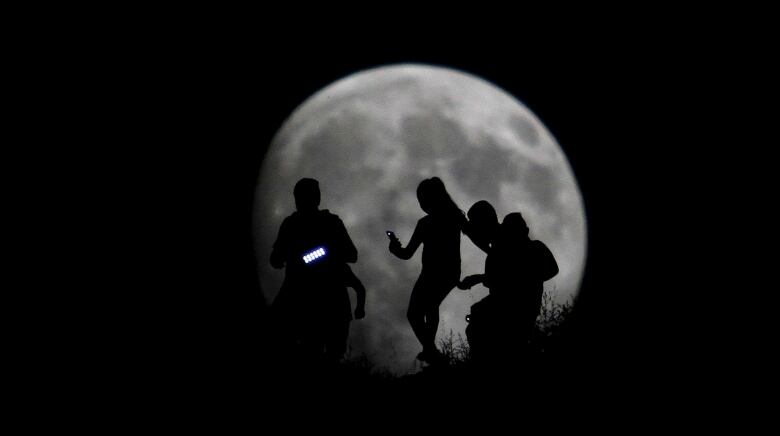Supermoon, lunar eclipse coincide for rare celestial event
2 events won't happen at the same time again until 2033
Stargazers are gearing up for a rare event this weekend the combination of a supermoon and a lunar eclipse.
Islanders can catch a glimpse of the astronomical event on Sunday night. The last time the two events occurred together was in 1982 and it won't happen again until 2033.
So, what exactly is a supermoon?
"A supermoon is simply the occurrence of a full moon when it is at its closest point in orbit to the Earth, known as the perigee," said CBC Maritimes meteorologist Kalin Mitchell.
- FORECAST | Supermoon eclipse over Nova Scotia skies Sunday
- Look up Sunday night: Supermoon plus total lunar eclipse equals rare sky show
In other words, the moon will appear slightly larger simply because it'll be closer to the Earth.
Megan Glover, an engineering and physics laboratory technician at UPEI, cautions the difference will be hard to spot.
"If you weren't told that the moon was 'super' when you were looking at it, you probably wouldn't notice it," she said.
"The supermoon is not a big deal. It gets really over hyped Supermoons occur fairly regularly, with a frequency of a little over a year between them usually, although sometimes the moon phase cycle and the orbit coincide so that they're more frequent."
'Taking a bite out of the moon'
But that's not to say this weekend's celestial event is a wash.
The total lunar eclipse when the moon moves directly into the darkest part of the Earth's shadow,blocking it from fully reflecting the light of the sun is a pretty spectacular event all on its own.
"The lunar eclipse that is happening at the same time is a bigger deal, especially because it's a total one," Glover said.
The supermoon will not be really noticeable to the eye. The eclipse will be.- Megan Glover
"On P.E.I., we won't see another total lunar eclipse until January 2019 so we won't see the fully red moon effect of the total eclipse until then and that's if the skies are clear at the time."
The supermoon will be visible when the moon is up and will look much like a regular full moon.
The partial eclipse begins at 10:07 p.m. when, according to Glover, "it looks like something is taking a bite out of the moon."
The moon will be fully in the Earth's shadow and will appear red by 11:11 p.m. That'll last until 12:43 a.m. Monday morning, and the eclipse will end at 1:07 a.m.
The good news? You won't need any fancy tools to catch it.
"It can be seen with just one's eyes," Glover said.
"The supermoon will not be really noticeable to the eye. The eclipse will be. Binoculars can add to the experience so that people can look at features on the moon, but they're not necessary."
Highest tides of 2015
The phenomenon will have a dramatic effect on the Earth's tides, according to Environment Canada meteorologist Linda Libby.
"For a couple of days after this moon we're looking at the highest tides for 2015 and, in fact, probably for another 18 years," she said. "We're also looking at some of the lowest tides of the year at the same time."

Libby said the tides could cause some local flooding especially around the Bay of Fundy and Minas Basin areas, but she said major flooding isn't expected because there aren't any storms in the forecast.
P.E.I. is not expected to see any flooding.












_(720p).jpg)


 OFFICIAL HD MUSIC VIDEO.jpg)
.jpg)



























































































